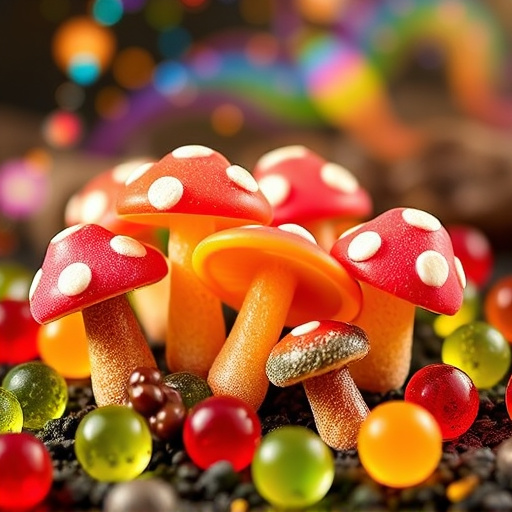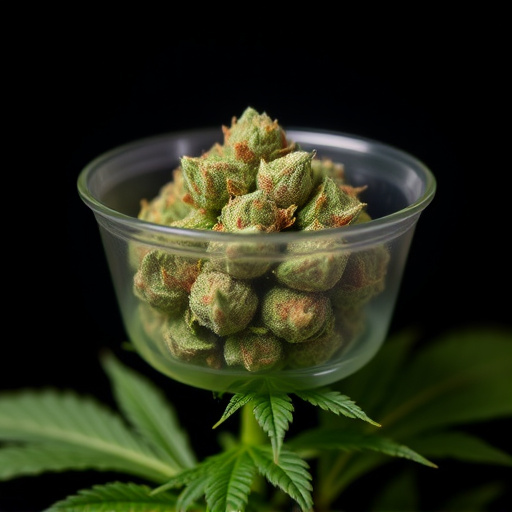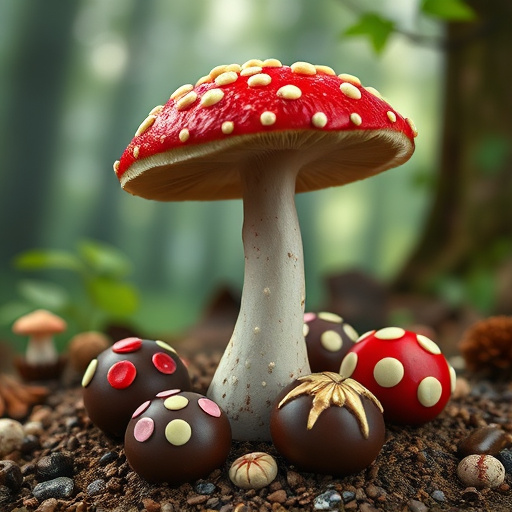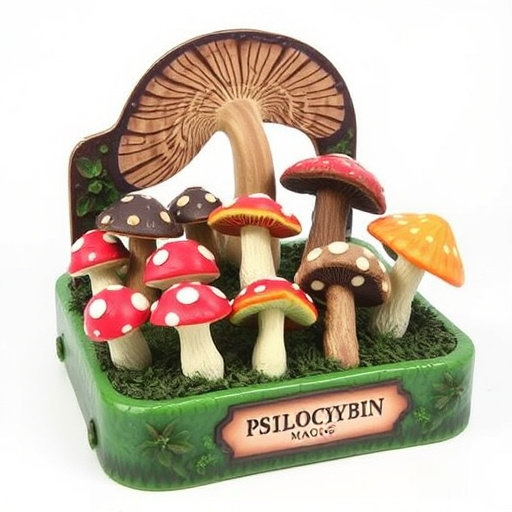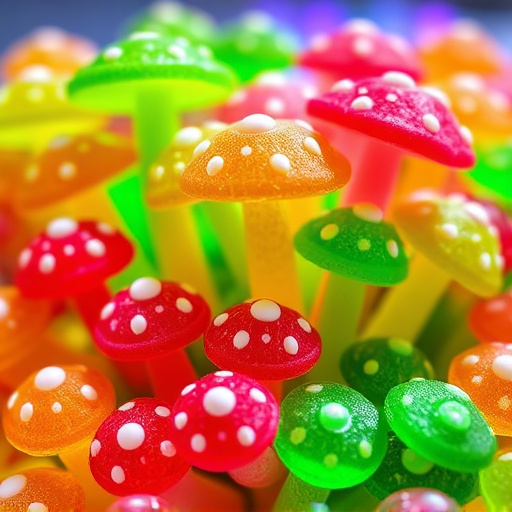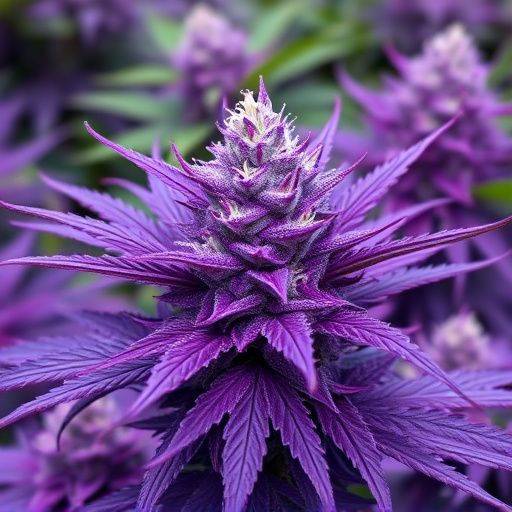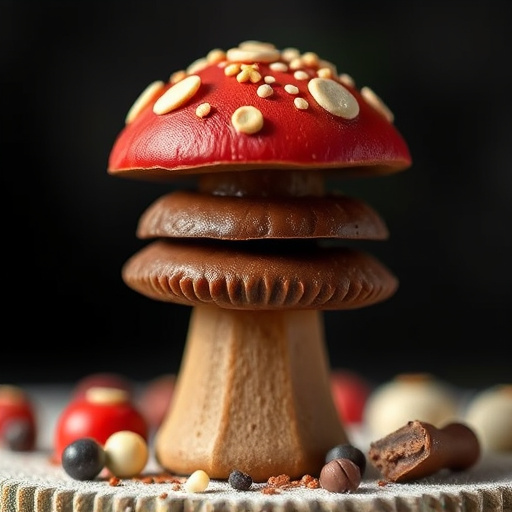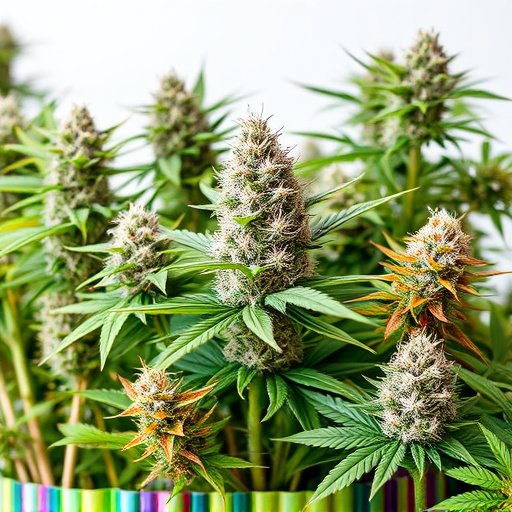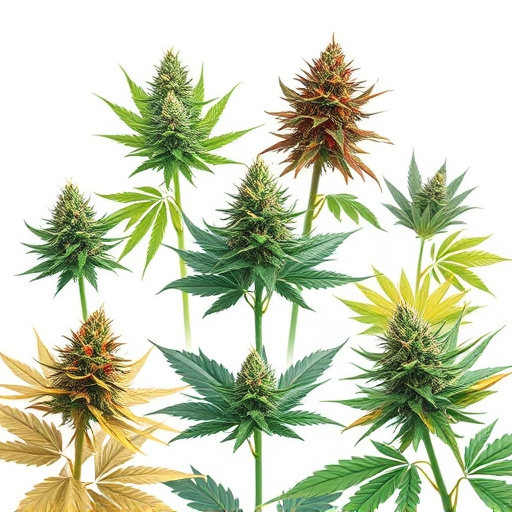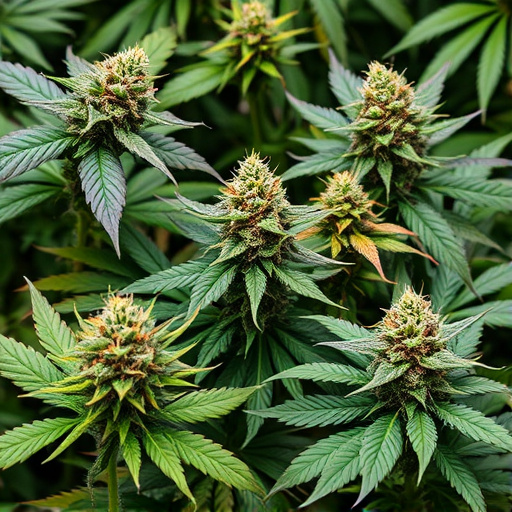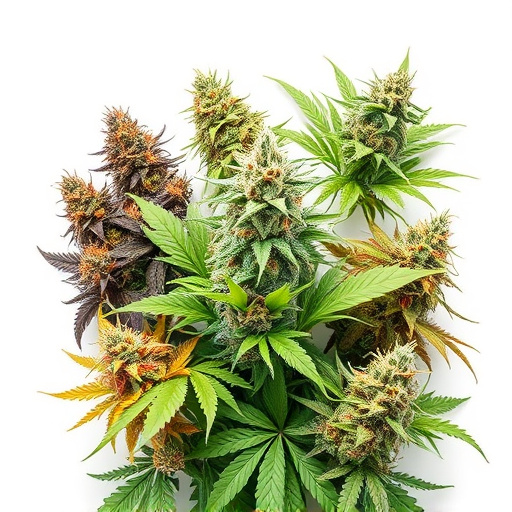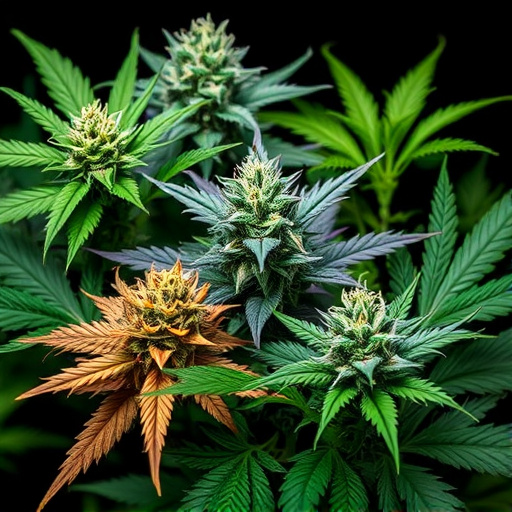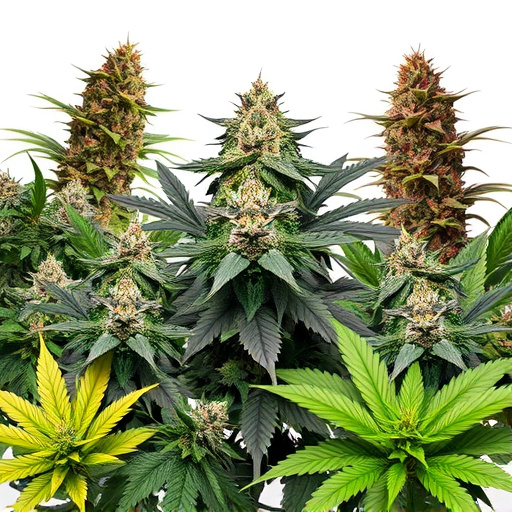Cannabis cultivation methods, whether indoor or outdoor, significantly impact plant chemistry and terpene profiles in various strains. Indoor growing offers precise control over environmental factors, allowing for consistent cannabinoid levels and faster flowering times, while outdoor cultivation exposes plants to natural elements, resulting in broader terpene ranges and unique aromas. These differences create visually distinct plants with varying structures, colors, and leaf sizes, catering to diverse preferences and medicinal benefits among different cannabis strains.
Discover the fascinating differences between indoor and outdoor-grown cannabis flowers. This article explores how growth environments dramatically impact plant chemistry, terpene profiles, and visual characteristics. Learn about the physical variations in appearance, size, and shape of these plants, and gain insights into strain selection based on cultivation methods. Understanding these distinctions helps consumers choose different cannabis strains for their preferred effects and experiences.
- Growth Environment Impacts Cannabis Flower Characteristics
- – Discussing the effects of indoor vs outdoor growing on plant chemistry and terpene profiles.
- Visual Differences Between Indoor and Outdoor Plants
Growth Environment Impacts Cannabis Flower Characteristics
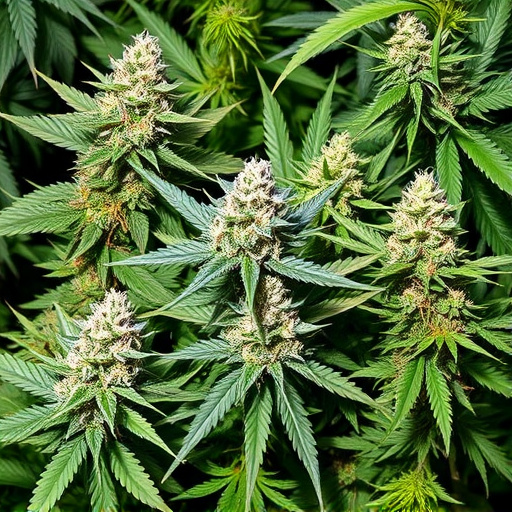
The environment in which cannabis plants grow plays a significant role in shaping the characteristics of their flowers, leading to noticeable differences between indoor and outdoor-grown varieties. When cannabis is cultivated indoors, growers have precise control over various factors like temperature, humidity, light cycles, and nutrition. This controlled environment allows for the cultivation of specific different cannabis strains that may exhibit unique terpene profiles, flavors, and potential therapeutic effects. Indoor growing can also result in faster flowering times, enabling farmers to harvest multiple crops per year.
Conversely, outdoor cannabis plants are at the mercy of natural elements such as sunlight exposure, temperature fluctuations, and local ecosystems. These variables contribute to a more diverse range of characteristics among outdoor-grown strains. Outdoor cannabis flowers often develop a stronger connection with the surrounding environment, resulting in distinct earthy or forestale notes that reflect their natural setting. The time taken for these plants to mature can vary widely depending on the climate, affecting both the plant’s growth rate and final yield.
– Discussing the effects of indoor vs outdoor growing on plant chemistry and terpene profiles.
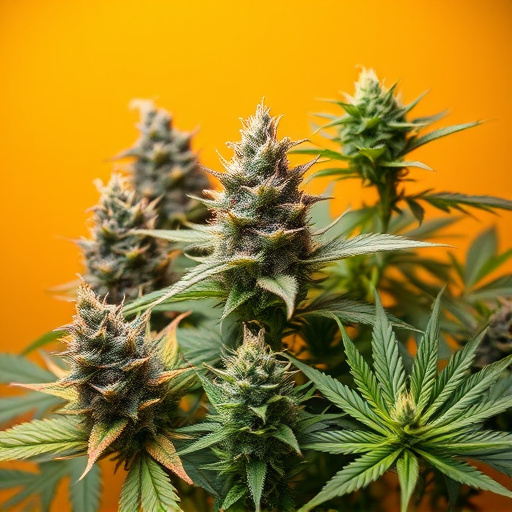
Cannabis growers often emphasize the distinctions between indoor and outdoor cultivation, primarily due to their significant impacts on plant chemistry and terpene profiles. Plants grown indoors under controlled environments tend to exhibit more uniform characteristics, allowing cultivators to precisely manipulate variables like light intensity, temperature, and humidity. As a result, these conditions can favor specific cannabinoid production, leading to consistent levels of THC or CBD in different cannabis strains.
Conversely, outdoor cultivation exposes plants to natural light cycles, varying temperatures, and diverse environmental stimuli. These factors contribute to a broader range of terpene profiles, often resulting in more complex aromas and flavors. The interaction between sunlight, soil nutrients, and environmental stress can also influence the plant’s cannabinoid composition, creating unique chemical signatures within different cannabis strains. This diversity is why some cultivators prefer outdoor growing for its ability to produce cannabis with distinctive and varied effects.
Visual Differences Between Indoor and Outdoor Plants
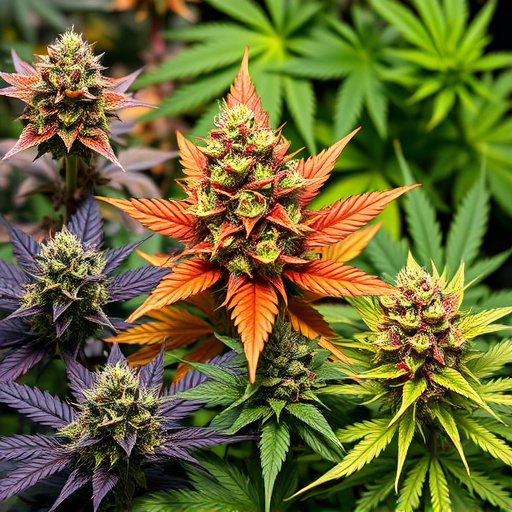
When comparing indoor and outdoor-grown cannabis plants, one of the most noticeable differences lies in their visual appearance. Indoor-cultivated cannabis often exhibits a more uniform and compact structure due to controlled growing conditions. These plants typically have shorter stems with denser buds, resulting in a bushier overall shape. The leaves are usually smaller and darker green, reflecting the optimal light levels provided by indoor lighting systems. In contrast, outdoor cannabis plants can grow taller and more leggy, reaching for the sun. Their leaves are often larger and may vary in color, showing shades of bright green, purple, or even red, depending on the strain and environmental factors.
The difference in visual characteristics is largely influenced by the diverse needs of various cannabis strains. Some varieties thrive in the controlled environment of an indoor grow room, where growers can manipulate light cycles, temperature, and humidity to optimize bud development. Conversely, outdoor plants are at the mercy of natural conditions, which can lead to more varied physical attributes. This diversity in appearance not only adds aesthetic appeal but also offers cultivators a wide range of choices when selecting different cannabis strains for specific preferences and medicinal benefits.
In conclusion, understanding the distinctions between indoor and outdoor-grown cannabis flowers is essential for consumers seeking specific characteristics in different cannabis strains. Growth environment significantly influences plant chemistry, resulting in varied terpene profiles that contribute to unique aromatics and effects. While indoor cultivation offers control over factors like light and humidity, outdoor methods allow plants to naturally interact with their environment, potentially enhancing certain desirable traits. Regardless of the setting, recognizing these differences empowers consumers to make informed choices based on their preferred sensory experiences and desired therapeutic benefits.

